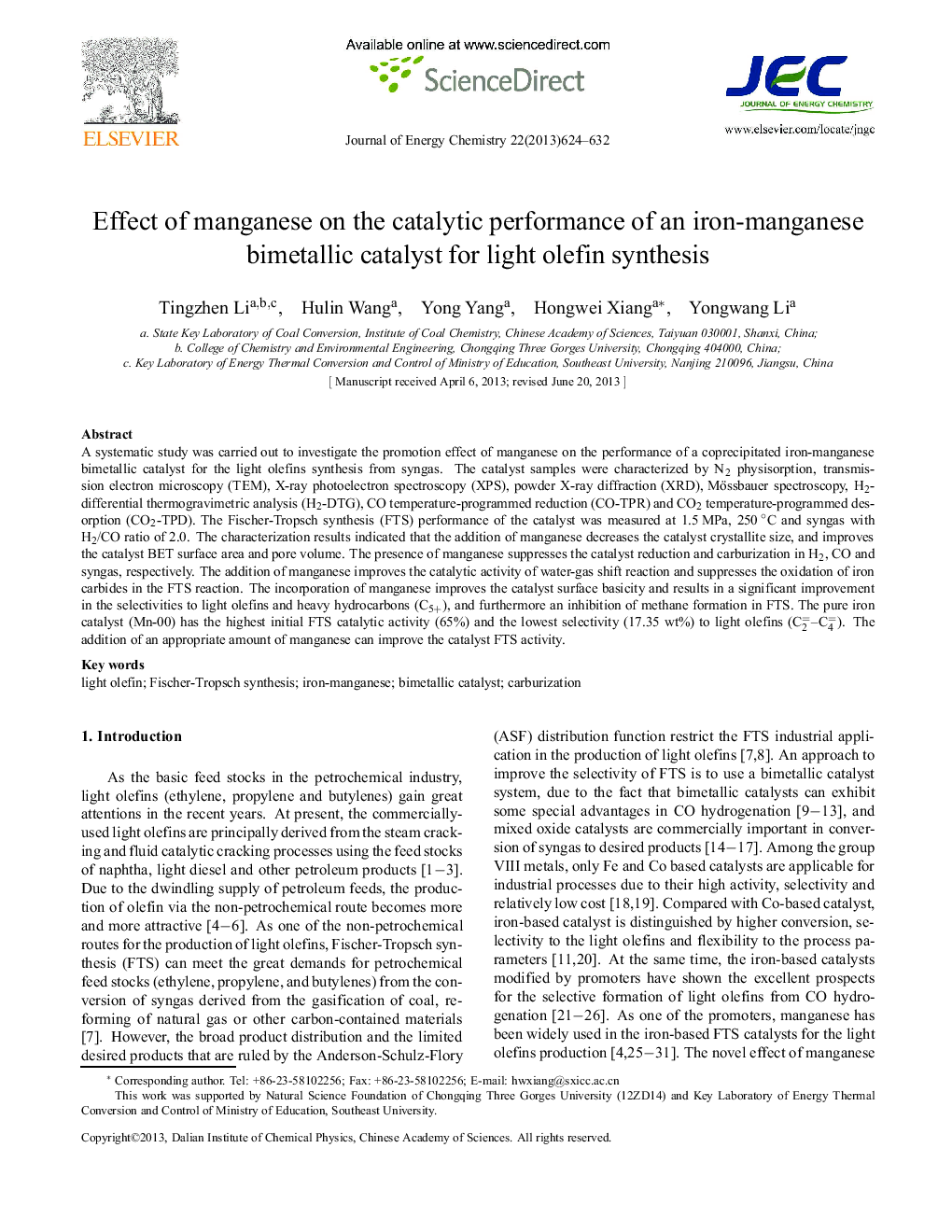| کد مقاله | کد نشریه | سال انتشار | مقاله انگلیسی | نسخه تمام متن |
|---|---|---|---|---|
| 64023 | 48265 | 2013 | 9 صفحه PDF | دانلود رایگان |

A systematic study was carried out to investigate the promotion effect of manganese on the performance of a coprecipitated iron-manganese bimetallic catalyst for the light olefins synthesis from syngas. The catalyst samples were characterized by N2 physisorption, transmission electron microscopy (TEM), X-ray photoelectron spectroscopy (XPS), powder X-ray diffraction (XRD), Mössbauer spectroscopy, H2-differential thermogravimetric analysis (H2-DTG), CO temperature-programmed reduction (CO-TPR) and CO2 temperature-programmed desorption (CO2-TPD). The Fischer-Tropsch synthesis (FTS) performance of the catalyst was measured at 1.5 MPa, 250 °C and syngas with H2/CO ratio of 2.0. The characterization results indicated that the addition of manganese decreases the catalyst crystallite size, and improves the catalyst BET surface area and pore volume. The presence of manganese suppresses the catalyst reduction and carburization in H2, CO and syngas, respectively. The addition of manganese improves the catalytic activity of water-gas shift reaction and suppresses the oxidation of iron carbides in the FTS reaction. The incorporation of manganese improves the catalyst surface basicity and results in a significant improvement in the selectivities to light olefins and heavy hydrocarbons (C5+), and furthermore an inhibition of methane formation in FTS. The pure iron catalyst (Mn-00) has the highest initial FTS catalytic activity (65%) and the lowest selectivity (17.35 wt%) to light olefins (C=2−C=4). The addition of an appropriate amount of manganese can improve the catalyst FTS activity.
In the steady state, the Mn-07 catalyst has the highest CO conversion. The selectivities to CO2, light olefins (C=2 –C=4) and heavy hydrocarbons (C5+) are increased with the increase in manganese content, whereas the CH4 selectivity is decreased significantly.Figure optionsDownload as PowerPoint slide
Journal: Journal of Energy Chemistry - Volume 22, Issue 4, July 2013, Pages 624–632